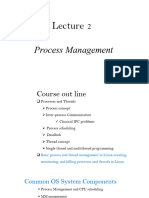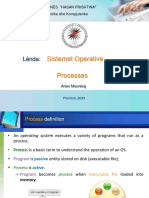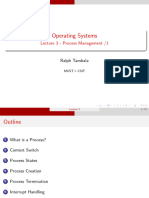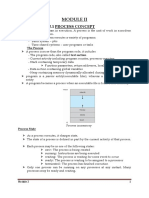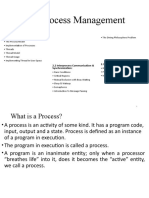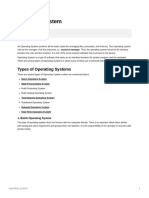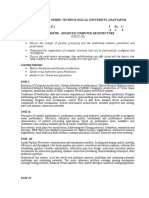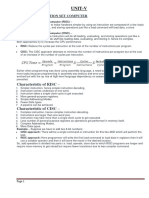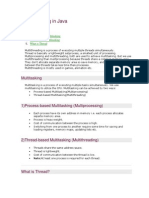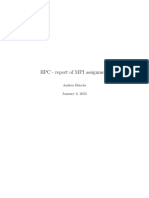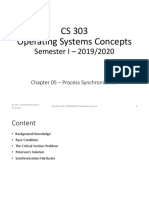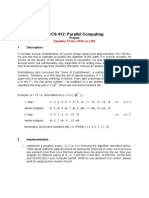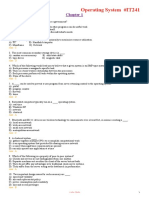0% found this document useful (0 votes)
117 views54 pagesChapter 2. Processes and Process Management
This document discusses processes and process management. It defines what a process is, the different components that make up a process, and the different states a process can be in. It also describes how processes are created and terminated, and how operating systems implement process management through process contexts, process control blocks, and inter-process communication.
Uploaded by
Minte DejeneCopyright
© © All Rights Reserved
We take content rights seriously. If you suspect this is your content, claim it here.
Available Formats
Download as PPTX, PDF, TXT or read online on Scribd
0% found this document useful (0 votes)
117 views54 pagesChapter 2. Processes and Process Management
This document discusses processes and process management. It defines what a process is, the different components that make up a process, and the different states a process can be in. It also describes how processes are created and terminated, and how operating systems implement process management through process contexts, process control blocks, and inter-process communication.
Uploaded by
Minte DejeneCopyright
© © All Rights Reserved
We take content rights seriously. If you suspect this is your content, claim it here.
Available Formats
Download as PPTX, PDF, TXT or read online on Scribd
/ 54





















